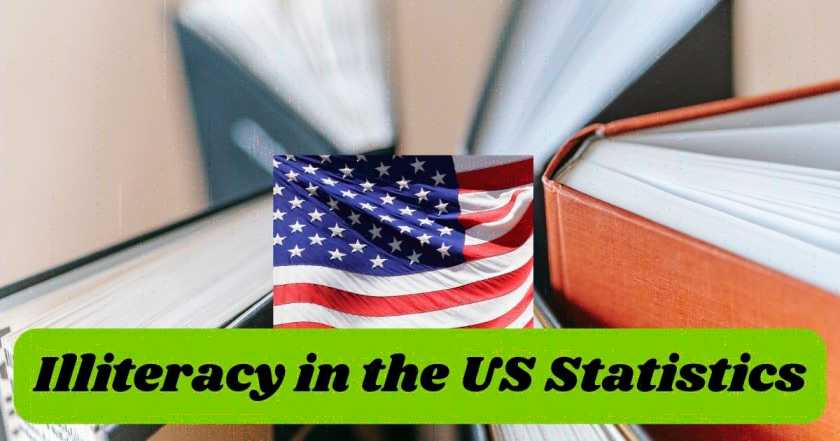What is meant by Illiteracy in the US?
Illiteracy in the United States refers to the condition in which individuals lack the basic reading and writing skills necessary to function effectively in daily life. Illiteracy can manifest in various forms, including difficulty understanding written texts, inability to fill out forms, struggles with basic math concepts, and challenges in comprehending instructions or following written directions.
Various factors influence literacy development, including educational opportunities, socioeconomic status, learning English as a second language, learning disabilities, and involvement in criminal activities. These factors often intertwine and perpetuate a cycle of illiteracy.
Illiteracy poses significant barriers to individual success and societal advancement. It can limit educational and employment opportunities, hinder access to important information and resources, and impede full participation in civic and community activities. Illiteracy also correlates with various social and economic challenges, including poverty, unemployment, and reduced quality of life.
Efforts to combat illiteracy in the United States involve educational interventions, literacy programs, community outreach initiatives, and policy measures aimed at improving literacy rates and providing support to individuals with low literacy skills. These efforts aim to empower individuals with the foundational skills necessary for personal and professional growth, as well as to promote a more literate and inclusive society.
Illiteracy in the US
Illiteracy significantly impacts an individual’s ability to actively engage in and contribute to their surroundings.
| Illiteracy Percentage | No. of Illiterates in US | |
|---|---|---|
| Illiteracy Rate in the US | 20% | 68 million |
What is the US Illiteracy Rate in 2024?
One-fifth of American adults face challenges in reading, indicating a significant portion of the population with difficulties in literacy. Approximately 20% (68 million) of the adult population in the United States is functionally illiterate in 2024, with certain demographics, such as Hispanics, older individuals, and those incarcerated, facing a higher risk of low literacy levels compared to the general population.
Among adults aged 66 to 74, approximately 28% exhibit the highest percentage of low literacy levels. In 2024, approximately 21% of Americans aged 18 and older are reported to be illiterate.
California reports the lowest literacy rate in the nation, with 23% of adults in this age group lacking proficiency in reading skills. These statistics underscore regional disparities in literacy levels across the United States.
Poverty and low literacy share a cyclical relationship, with low-literate adults being more prone to poverty compared to their high-literate counterparts. Approximately 43% of low-literate adults in the US are found to live below the poverty line.
Illiteracy tends to be passed down from parents to children, amplifying the risk of unemployment and poverty within families. Effective solutions to address illiteracy involve adult literacy programs that offer tailored instruction and well-structured curricula. Collaboration among researchers, non-profit organizations, government entities, and public schools is crucial in preventing and remedying illiteracy in the United States. By working together, these stakeholders can implement comprehensive strategies that promote literacy and break the cycle of disadvantage associated with low literacy levels.
Consequences of Illiteracy in the US
Illiteracy carries a range of negative consequences of its impact on individual participation and contribution. These consequences include increased rates of crime, poorer health outcomes, lower academic performance, and slower economic growth. Low literacy levels among U.S. adults may cost the economy $2.5 trillion annually, emphasizing the economic significance of addressing literacy challenges through education initiatives to enhance individual skills and foster economic growth.
Countries with higher literacy rates tend to experience greater national productivity, improved health outcomes, and increased social equality compared to nations with lower literacy rates. Investing in literacy initiatives and promoting educational opportunities can not only enhance individual well-being but also contribute to overall societal development and prosperity. By prioritizing literacy education and addressing the root causes of illiteracy, countries can foster a more inclusive, productive, and equitable society.
Literacy in America
| Literacy Percentage | No. of Literates in US | |
|---|---|---|
| Literacy Rate in the US | 80% | 273 million |
What is the US Literacy Rate in 2024?
On average, 80% of adults (273 million) in the United States are considered literate in 2024. The literacy rate among Americans aged 18 and older is reported at 88%, indicating a strong majority with proficient reading and writing skills. This statistic highlights widespread access to education and the ability to comprehend written information, facilitating engagement in various aspects of society. However, ongoing efforts are needed to support individuals with lower literacy levels and ensure equitable access to literacy education for all.
New Hampshire boasts the highest literacy rate among adults aged 18 and older, with over 90% proficient in reading and writing skills.
According to PIAAC (OECD 2013), four out of five U.S. adults (80 percent) possess English literacy skills at level 2 or higher, enabling them to perform tasks such as comparing and contrasting information or making basic inferences. Conversely, one in five adults (21 percent) struggles with these tasks. This equates to 43.0 million adults in the U.S. with low literacy skills: 26.5 million at level 1, 8.4 million below level 1, and 8.2 million who were unable to participate in PIAAC’s survey due to language barriers or cognitive/physical limitations, thus categorized as having low English literacy skills based on international standards (OECD 2013). Adults classified as below level 1 may be deemed functionally illiterate in English. This means they are unable to effectively comprehend the meaning of sentences, locate specific information in short texts, or complete basic forms according to OECD 2013.
Efforts to address literacy issues in America are diverse and ongoing, ranging from educational programs aimed at improving literacy rates among adults to initiatives focused on early childhood literacy. Despite progress in certain areas, continued attention and investment are essential to ensure that every individual in America has the opportunity to develop strong literacy skills, empowering them to fully participate in society and achieve their potential.
Disclaimer: The data research report provided here is sourced from various channels, aiming for accuracy, but unable to guarantee every detail’s absolute precision. It is intended for informational purposes only, and users are urged to verify critical information independently before making decisions. We are not liable for any financial loss, errors, or damages arising from the use of this information. While our team strives for accuracy, the dynamic nature of data means we cannot verify every fact. Your understanding and discretion are valued.







